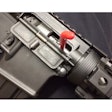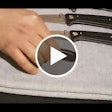With the recent surge in concealed carry legislation in many of our nation's states, smaller pistols chambered in the proven .380 ACP (Automatic Colt Pistol) caliber are becoming more popular with civilians and law enforcement.
The .380 ACP cartridge was developed by John Browning and introduced in 1908 by Colt, which chambered this round in small pocket pistols that quickly gained popularity in undercover police work.
The Germans followed with the introduction of the iconic Walther PP/PPK series of pistols (beginning in 1929) chambered in the same round and given the metric designation 9mm Kutz (German for 9mm Short). The metric designation is 9x17mm as opposed to the 9x19mm (German 9mm Luger—the standard 9mm we know today).
It is important to note that both the .380 ACP and the 9mm Luger have the same bullet diameter of .355 inch, so the .380 ACP is really a misnomer. The only difference dimensionally is the case length of the cartridge; also .380 ACP bullets are a bit lighter. Most range in weight from 70-90 grain compared with 9mm Luger bullets that range in weight from 90-147 grain.
Since the .380 case has less powder capacity than the 9mm Luger, this makes perfect sense. A .380 bullet will exit the muzzle ranging from 700-900 fps as opposed to 950-1,200 fps for their 9mm Luger cousins. The round's shorter case and lower powder capacity reduces velocity, as does the fact that most .380 pistols are smaller and have a barrel that's less than 3 inches in length.
Even with the reduced velocity, the .380 shines in several areas, and should be given consideration by officers as a backup gun.
The first area is the size of the pistol and the ability to deeply conceal it with an exceptionally low profile that will not print through clothing.
Unlike a small J-clone, five-shot revolver—no matter how small the profile, it still has a bulky cylinder—small auto pistols stack the ammunition vertically. The .380 ACP round is much shorter than either the 9mm Luger or the .38 Special, creating the ultimate deep concealment package with six to eight rounds of ammunition. This exceeds the average five-shot, deep-concealment revolver by a few potentially life-saving rounds.
Many officers have also chosen the .380, because of its pleasant recoil characteristics as compared with the 9mm Luger and its bigger cousins. The .380 can be snappy when shot out of a small-frame pistol and is still much more of a pleasure to shoot than its larger cousins.[PAGEBREAK]
Today's modern expanding ammunition also elevates the .380 to a respectable defensive round. Ball ammunition (Full Metal Jacket) of the past was responsible for typecasting this round as ineffective. This is a thing of the past. Ammo manufacturers such as CorBon, Speer and Hornady, now offer load choices with near 100 percent bullet-weight retention and virtually no bullet deformation as the bullet penetrates media such as clothing. Of particular interest is Hornady's new line of Critical Defense ammunition, which claims zero bullet deformation and 100 percent weight retention. The bullet also contains a red polymer tip that helps ensure reliable feeding.
It must be pointed out that small semi-automatics are obviously less reliable than revolvers and need consistent cleaning and maintenance after each use. I would also recommend extensive practice to become proficient as these are pistols designed for close-quarters use and not for target practice.
Unlike larger semi-automatics with safety features such as thumb safety levers, trigger safeties, loaded chamber indicators and grip safeties, these smaller pistols require far more vigilance, visual observation and tactile inspection. Most employ double-action triggers that perform two tasks—cocking the hammer and/or striker and releasing it. Most have no external hammers, and have either an internal low-profile hammer or an internal striker. Most have no exterior safeties.
This is done to keep a low and snag free profile, especially in a deep-concealment pocket holster or ankle rig.
Those considering a .380 ACP chambered semi-auto should consider the Kel-Tec P3AT, Ruger LCP (Light Compact Pistol), North American Arms Guardian .380, Walther PPK, Walther PK380 (Walther P22 clone), Bersa Thunder (Walther PPK clone) or CZ-USA .380 (Walther PPK clone).
Capacity will range from six to 12 rounds depending on the model selected. Please also remember that as a general rule, the smaller the gun, the fewer the safety features, but also the lighter the package and the more concealable it is.
If you are someone who can live with more visual and tactile inspection, then go for the smallest. That is the point of the .380—to pack as much firepower into the smallest package. The Kel Tec, Ruger, and NAA mentioned above are great options, because if you go any larger, you can chamber the 9mm Luger or the .40 S&W in the same frame size as the Walthers or the CZ, which would defeat the purpose of the .380.
Whatever you decide, practice with your firearm and make sure the ammunition selected feeds reliably into the gun as these pistols are very ammo selective.




















